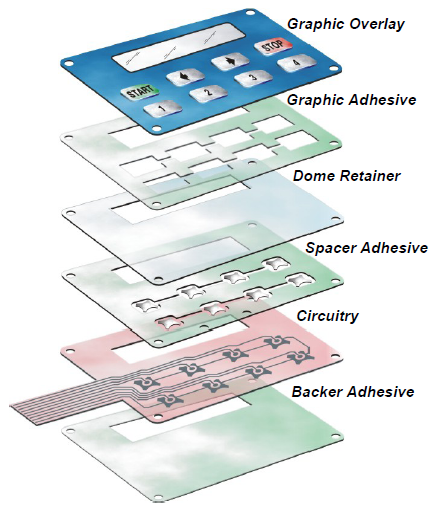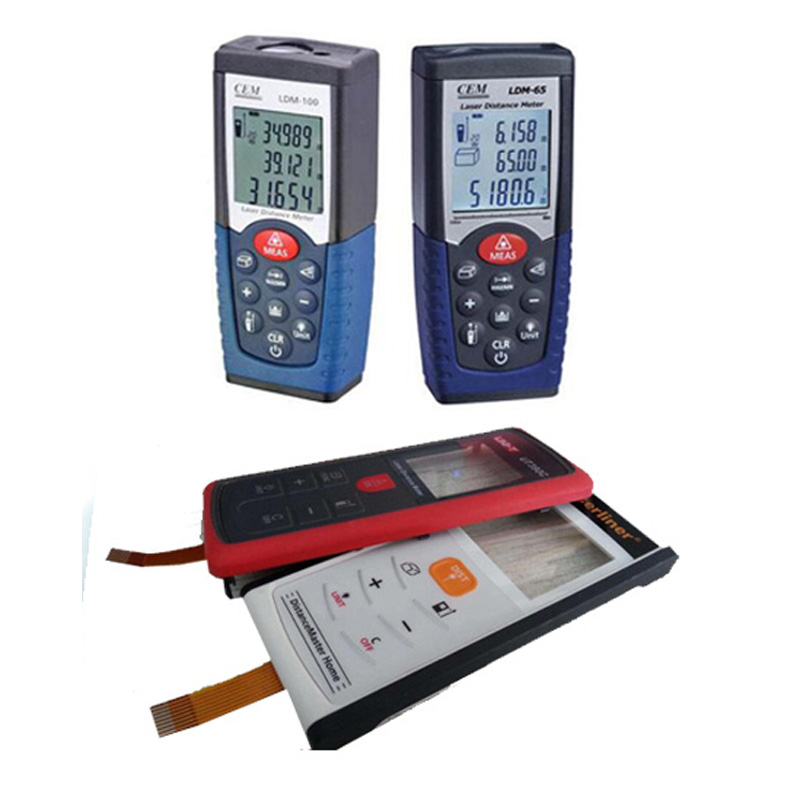Membrane switch integration strategies for automated manufacturing
Wiki Article
Comprehending the Value of Membrane Change in Modern Electronics
Membrane switches are indispensable parts in modern-day electronic gadgets. They offer a blend of functionality and design that boosts customer communication. Their lightweight and long lasting nature makes them appropriate for various applications. As sectors progress, the demand for personalization and advanced functions expands. Understanding exactly how membrane layer switches over add to advancement discloses their significance fit the future of electronic devices. What exists ahead for this innovation?The Basics of Membrane Switch Over Technology
Frequently ignored, membrane button innovation plays an important function in the modern electronic devices landscape. These tools, made up of multiple layers, function as interface for various digital items, ranging from family appliances to medical devices. A normal membrane layer button includes a graphic overlay, a spacer layer, and a circuit layer, which are carefully assembled to create a useful interface.When pressure is used to the overlay, the circuit layer is finished, permitting signals to be transmitted to the device. This innovation is known for its flexibility, allowing customization in design, performance, and form to meet certain user needs. Additionally, membrane layer switches are thin and lightweight, making them ideal for applications where space is a premium. Their sturdiness and resistance to environmental elements additionally boost their charm, guaranteeing they can hold up against rough problems while keeping performance. Generally, membrane layer button innovation is important to creating reliable and easy to use digital devices
Key Advantages of Membrane Switches
Membrane layer changes offer a number of vital benefits that make them a preferred selection in different electronic applications. Their style permits a portable form element, allowing makers to create streamlined and lightweight gadgets. Additionally, membrane buttons are resistant to dirt, wetness, and chemicals, which boosts their resilience and longevity popular atmospheres. The tactile comments supplied by these switches can enhance individual experience, making them simple and instinctive to operate.Furthermore, membrane layer switches can be customized with diverse graphics and shades, allowing for unique branding possibilities. The production procedure is usually cost-effective, particularly for high-volume manufacturing, as it minimizes assembly time and streamlines design. Lastly, membrane layer switches over require very little maintenance, adding to reduced overall functional costs. These benefits underscore their growing popularity in modern-day electronics, where dependability and easy to use interfaces are important.
Applications Across Different Industries
The flexibility of membrane changes allows their prevalent fostering across various markets. In the clinical area, they are generally utilized in analysis tools and patient tracking systems, offering a resilient interface immune to impurities. The vehicle industry makes use of membrane switches for control panel controls, enhancing customer experience with sleek styles that hold up against severe problems. In customer electronics, they work as control panels for gadgets such as microwaves and coffee machine, supplying an user-friendly user interface that is very easy to clean. The aerospace sector utilizes membrane layer buttons in cockpit controls, where dependability and room efficiency are vital. Additionally, the commercial industry leverages these buttons in machinery and control systems to guarantee robust operation sought after settings. This wide array of applications highlights the versatility of membrane layer switches, making them essential elements in improving performance and individual interaction across varied technological landscapes.Personalization and Design Adaptability

Future Fads in Membrane Switch Growth
Emerging trends in membrane button development suggest a growing emphasis on boosted functionality useful site and combination with wise innovations. As consumer demand for extra advanced digital gadgets rises, makers are concentrating on developing membrane layer changes that not only offer basic operational roles but also integrate features like touch sensitivity, backlighting, and haptic feedback.Furthermore, improvements in products are anticipated to enhance sturdiness and environmental resistance, making membrane changes appropriate for diverse applications in industries such as healthcare, vehicle, and customer electronics. The combination of capacitive touch innovation is likely to end up being more widespread, enabling sleeker designs and enhanced customer interfaces. membrane switch.Additionally, the rise of the Net of Things (IoT) is triggering the development of membrane switches over that can communicate wirelessly with various other devices, boosting interconnectivity. Overall, the future of membrane button modern technology shows up encouraging, driven by innovation and the search of easy to use servicesRegularly Asked Questions
Just How Do Membrane Switches Over Contrast to Typical Mechanical Buttons?
Membrane switches, being a lot more space-efficient and offering a sleek design, comparison with standard mechanical switches that provide responsive feedback. The previous commonly include personalized graphics, while the latter usually ensure longevity and reliability in different applications.What Materials Are Commonly Made Use Of in Membrane Layer Switch Over Production?
Membrane layer buttons are commonly created using materials such as polyester, polycarbonate, and printed conductive inks. These materials give flexibility, sturdiness, and responsiveness, making them ideal for various applications in electronic gadgets and customer interfaces.Can Membrane Switches Over Be Fixed or Reused?
Membrane layer switches can frequently be fixed, particularly if small concerns emerge, such as adhesive failing or surface area damages. Nevertheless, complete reuse is normally restricted due to wear and potential deterioration of materials in time.
Just How Do Environmental Elements Influence Membrane Layer Change Performance?
Environmental factors, such as exposure, temperature, and humidity to chemicals, substantially affect membrane layer switch efficiency. Extreme conditions can bring about deterioration, influencing responsiveness and long life, ultimately endangering the functionality of the gadget in numerous applications.What Is the Normal Life-span of a Membrane Change?
The normal lifespan of a membrane button generally varies from 1 to 5 million actuations, depending on factors such as usage frequency, environmental conditions, and the materials made use of in production, impacting sturdiness and performance longevity. A typical membrane button is composed of a visuals overlay, a spacer layer, and a circuit layer, which are carefully constructed to create a practical interface - membrane switch.When pressure is used to the overlay, the circuit layer is completed, permitting signals to be sent to the gadget. The responsive feedback supplied by these buttons can boost user experience, making them easy and intuitive to operate.Furthermore, membrane layer buttons can be personalized with varied graphics and colors, enabling for distinct branding chances. As customer need for more innovative electronic Get More Info gadgets rises, producers are focusing on creating membrane switches that not just serve standard functional duties however additionally integrate attributes like touch sensitivity, backlighting, and haptic feedback.Furthermore, innovations in materials are expected to boost durability and environmental resistance, making membrane layer switches ideal for varied applications in industries such as health care, automotive, and customer electronics. The combination of capacitive touch technology is most likely to end up being a lot more widespread, allowing for sleeker styles and enhanced user interfaces.Additionally, the surge of the Internet of Points (IoT) is triggering the advancement of membrane switches over that can communicate wirelessly with various other tools, improving interconnectivity. Membrane layer switches, being more space-efficient and offering a streamlined style, contrast with conventional mechanical buttons that supply tactile feedbackReport this wiki page